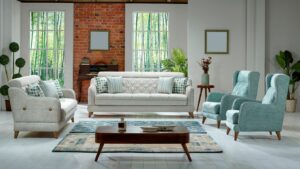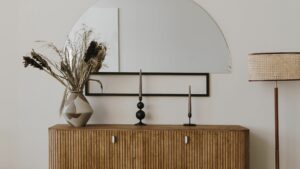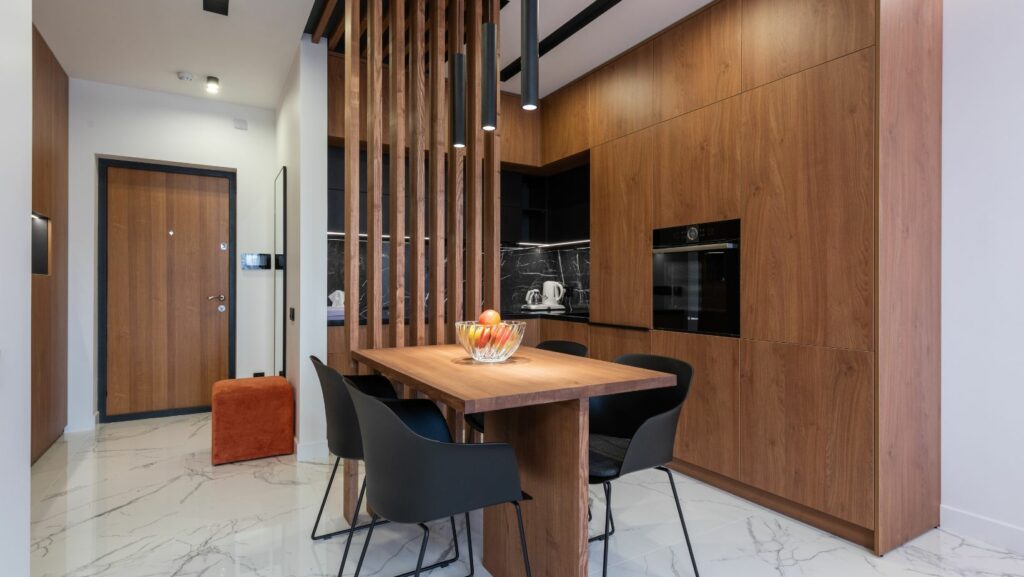Step into the ornate world of Victorian era furniture, where each piece tells a story of opulence and meticulous craftsmanship. During the reign of Queen Victoria from 1837 to 1901, furniture design witnessed a transformation that emphasized intricacy and luxurious detailing. This period in history not only reflected the social status of its owners but also showcased the technological advancements of the time.
Victorian furniture is renowned for its elaborate carvings, rich fabrics, and dark wood finishes. These pieces were more than mere functional items; they were symbols of the owner’s taste and affluence. As we explore the characteristics and historical significance of this furniture, you’ll discover how it continues to influence modern interior design.
Understanding Victorian furniture offers a glimpse into a bygone era that valued aesthetics as much as utility, setting the stage for today’s diverse design preferences. Join us as we delve into the elegance and complexity of this fascinating period in furniture history.
Victorian Era Furniture
Key Influences and Origins
 Victorian era furniture drew inspiration from various historical styles, culminating in a unique blend of aesthetics. Influences predominantly came from Gothic, Rococo, and Neoclassical designs, each adding a distinctive flair to the furniture produced. Gothic styles contributed pointed arches and intricate carving details, reminiscent of medieval ecclesiastical architecture. Rococo influence is evident in the ornate carvings and scrollwork, emphasizing grace and delicate beauty. Neoclassical features brought in Roman and Greek influences, seen in the use of columns and classical forms. This eclectic mix reflects the Victorian fascination with history and the arts, seeing a revival of these elements in their own furnishings.
Victorian era furniture drew inspiration from various historical styles, culminating in a unique blend of aesthetics. Influences predominantly came from Gothic, Rococo, and Neoclassical designs, each adding a distinctive flair to the furniture produced. Gothic styles contributed pointed arches and intricate carving details, reminiscent of medieval ecclesiastical architecture. Rococo influence is evident in the ornate carvings and scrollwork, emphasizing grace and delicate beauty. Neoclassical features brought in Roman and Greek influences, seen in the use of columns and classical forms. This eclectic mix reflects the Victorian fascination with history and the arts, seeing a revival of these elements in their own furnishings.
Major Design Styles
The Victorian era boasted several predominant design styles that varied through the decades of Queen Victoria’s reign. Early Victorian furniture often featured heavy, massive forms and dark woods, such as mahogany and walnut. Mid-Victorian style saw a shift towards more comfort and ornamental designs, incorporating plush fabrics and softer lines. This period also witnessed the rise of the Arts and Crafts movement, which emphasized craftsmanship and natural materials, reacting against the industrialization of furniture making. Late Victorian styles included Aesthetic and the Anglo-Japanese style, where emphasis on visual and material opulence was evident. These styles incorporated lighter woods, inlays of exotic woods, and motifs inspired by nature and geometric patterns, showcasing the era’s innovative approach to traditional design.
Characteristics of Victorian Era Furniture
Materials Used
 Victorian era furniture predominantly features high-quality wood, with mahogany, walnut, and oak at the forefront. These woods were favored for their durability and the rich, deep colors they provided, essential for the era’s aesthetic demands. Mahogany was particularly prized for its fine grain and resistance to shrinking and warping. Furniture makers also extensively used rosewood and ebony for inlays and detailed ornamental work. Additionally, they often incorporated materials like marble for tabletops, and metals such as brass and silver for decorative hardware, enhancing the furniture’s opulent appearance.
Victorian era furniture predominantly features high-quality wood, with mahogany, walnut, and oak at the forefront. These woods were favored for their durability and the rich, deep colors they provided, essential for the era’s aesthetic demands. Mahogany was particularly prized for its fine grain and resistance to shrinking and warping. Furniture makers also extensively used rosewood and ebony for inlays and detailed ornamental work. Additionally, they often incorporated materials like marble for tabletops, and metals such as brass and silver for decorative hardware, enhancing the furniture’s opulent appearance.
Common Designs and Patterns
The designs and patterns in Victorian furniture are deeply influenced by Gothic, Rococo, and Neoclassical styles, each adding a layer of complexity and elegance. Gothic styles are recognizable by their pointed arches and quasi-religious aesthetic, making the furniture appear almost architectural in form. Rococo influence brings in more curves, ornate carvings featuring natural elements like leaves and flowers, and asymmetrical designs. Neoclassical elements reflect a return to ancient classical forms with Roman and Greek influences, showcasing straight lines and minimalistic, yet impactful ornamentation. Patterns were often elaborate, with floral and animal motifs, intermixed with geometric shapes. Upholstery in rich fabrics like velvet and silk, often in dark, lush colors, complemented these intricate designs.
Impact of Victorian Furniture on Modern Designs
Influence on Contemporary Furniture
 Victorian furniture’s impact on contemporary designs primarily manifests through its ability to blend history with modern aesthetics. Designers integrate Victorian elegance with modern minimalism, resulting in pieces that are both functional and visually appealing. For instance, Victorian ornate frameworks are now often paired with cleaner lines and more subdued color palettes. Modern furniture may feature the elaborate carving typical of the Victorian era but executed in modern materials such as acrylic or simplified wood cuts. These adaptations make Victorian-inspired designs accessible to today’s consumer, ensuring their place in the contemporary furniture scene.
Victorian furniture’s impact on contemporary designs primarily manifests through its ability to blend history with modern aesthetics. Designers integrate Victorian elegance with modern minimalism, resulting in pieces that are both functional and visually appealing. For instance, Victorian ornate frameworks are now often paired with cleaner lines and more subdued color palettes. Modern furniture may feature the elaborate carving typical of the Victorian era but executed in modern materials such as acrylic or simplified wood cuts. These adaptations make Victorian-inspired designs accessible to today’s consumer, ensuring their place in the contemporary furniture scene.
Revival Trends in Interior Design
The revival of interest in Victorian-inspired decor reflects a broader trend toward eclectic interiors that combine elements from various periods and styles. Recent trends include using Victorian elements such as plush velvet sofas and ornate wallpaper in otherwise modern settings. This juxtaposition creates a distinctive yet harmonious look that appeals to a diverse audience. Additionally, design elements such as tasseled cushions, Persian rugs, and detailed moldings from the Victorian era are seeing increased use in modern homes, reflecting a resurgence of appreciation for the richness and depth they add to interior environments.

